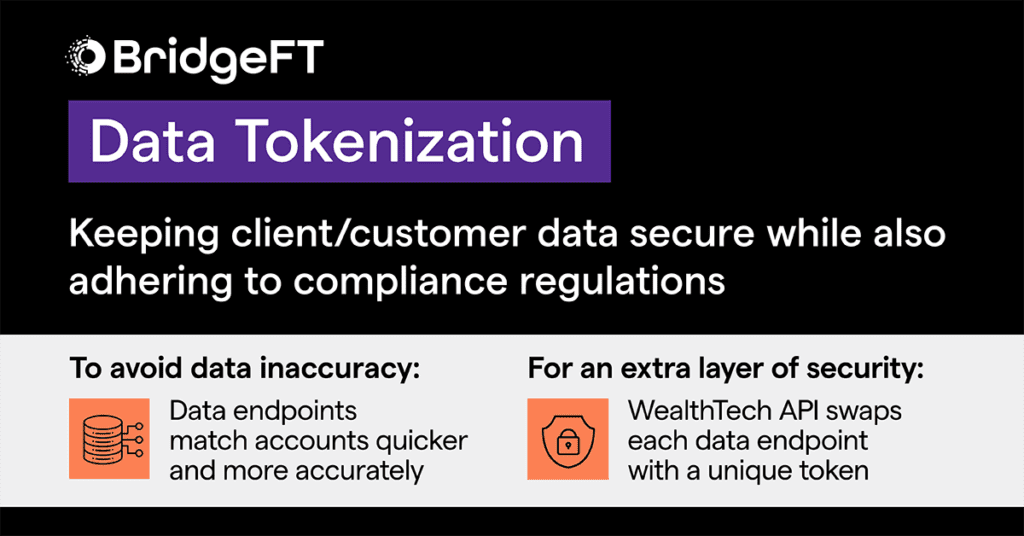For wealth management companies, protecting both advisors’ and their customers’ data is a top priority. To accomplish this goal, many companies rely on a process called data tokenization.

What is Data Tokenization?
Data tokenization is a data protection technology that involves swapping sensitive information with non-sensitive placeholders, called tokens. This is how data tokenization works:
- The organization takes a valuable set of data – such as a social security or credit card number – and swaps it with a data token.
- This process is irreversible so it cannot be undone by hackers or cybercriminals.
- Once the tokenization has been completed, the sensitive data is never shown and can even be kept off-site.
This idea behind data tokenization is similar to a casino swapping cash for poker chips. Cash is valuable and easily stolen. Chips, on the other hand, have no intrinsic value by themselves.
The only difference is that, in a casino, chips can easily be turned in for cash. The data tokenization process, on the other hand, is irreversible. API tokens cannot be easily reversed into their raw form.
Common Problems with Traditional Data Matching
Traditionally, companies will match customer and advisor accounts with commonly used data sets such as names, addresses, or account numbers. However, there are several issues with this process:
- Data doesn’t always get delivered cleanly
- Data can be delivered in a confusing format, making it difficult for the back-end team to interpret
- There could be inaccuracies in the data when it is formatted
In general, data matching using traditional data sets leaves customers exposed and is open to human error. This is why so many companies choose to use data tokenization instead.
Why Data Tokenization?
Today’s world is incredibly data-heavy and even smaller fintech startups or wealth managers will likely find themselves in possession of valuable customer data like credit card information, addresses, or account information that all needs to be protected. As such, keeping client and customer data safe is a critical task for most organizations. But, in addition to wanting to keep customers safe, organizations must adhere to strict laws and regulations related to data privacy.
In order to keep client/customer data secure while also adhering to compliance regulations, organizations rely on data tokenization to swap out sensitive information for more generic placeholders.
Connecting Accounts Using Tokens
Many advisors, FinTech companies, and other wealth managers are particularly interested in data tokenization because they have to protect two different data sets:
- Advisor users (and presumably database records for them)
- Customer data (and presumably database records for them)
To keep this data protected, advisors must connect all of these relationships which means they must reference many types of data points. This can be challenging and is likely to result in errors.
To avoid data inaccuracy, BridgeFT uses data endpoints like Social Security Numbers (SSNs) and Tax Identification Numbers (Tax IDs) to match accounts quicker and more accurately.
From there, BridgeFT goes one step further and uses data tokenization to replace the SSNs and Tax IDs.
BridgeFT’s Approach to Tokenization
BridgeFT’s WealthTech API platform offers an accounts API that delivers a list of your advisor’s accounts.
For security purposes, the WealthTech API swaps each SSN with a unique “tax_id_token” for each account. Additionally, there is an API endpoint that allows you to retrieve a “tax_id_token” given a clear text SSN string. The combination of these two API endpoints allows users to orchestrate the workflow to match advisor’s customers to accounts that have their SSNs.
Historically, using SSN numbers to connect accounts increases the risk of sensitive information being exposed. But, by swapping each SSN with a token, BridgeFT adds an extra layer of security for both advisors and their clients.
You can read more details about BridgeFT’s account identification process here. Or, to get started with BridgeFT’s WealthTech API, click here.

